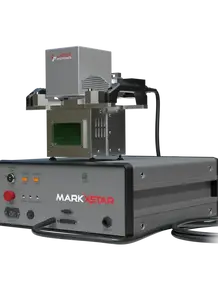What Is Laser Cleaning?
The Most Effective Rust Removal Tool in Your Workshop
Laser cleaning utilizes a high-energy laser beam to break molecular bonds and vaporize unwanted materials, such as contaminants or coatings, from a surface. This advanced technology effectively eliminates corrosion, coatings, paint, and other substances without causing damage to the underlying material. The process is non-contact, precise, and highly controlled, enabling the targeted removal of undesired layers.
As more professionals across different industries recognize its advantages, laser cleaning is becoming increasingly popular. Laser Photonics manufactures laser cleaning tools in-house, providing clients with both turnkey and customized solutions that replace older, less efficient, and potentially harmful industrial cleaning methods.

Types of Laser Cleaning Systems
CleanTech! Lasers remove dirt. Experience it!
Laser Cleaning vs. Traditional Methods
Explore how laser cleaning surpasses conventional surface preparation techniques in safety, precision, and environmental impact.
Chemical Treatment vs. Laser Cleaning
Unlike chemical treatments, laser cleaning solutions are environmentally friendly, safe for operators, and effective across a wide range of surfaces. Many chemical cleaners are designed for specific coatings and require time-consuming processes for dilution and application. Additionally, these cleaners often contain harmful substances that, when released, can damage ecosystems. Improper chemical handling can result in
accidents like spills or burns. Chemical treatments also involve ongoing use of consumables, stringent safety protocols, post-process cleanup, and proper waste disposal, making them more resource-intensive and hazardous.
Dry Ice Blasting vs. Laser Cleaning
When compared to dry ice blasting, laser cleaning offers greater versatility across a wide range of surfaces and eliminates the recurring operational costs that dry ice requires. Dry ice blasting has limitations, as it may not be effective on all surfaces or resistant contaminants. While dry ice is produced from recycled carbon dioxide and is considered to have minimal impact on greenhouse gas emissions, the cleaning process, along with some production methods, still releases CO2 into the atmosphere. Additionally, safety risks with dry ice cleaning include potential cold burns and the danger of CO2 gas buildup in confined spaces, posing a threat to operator health.
Sandblasting vs. Laser Cleaning
Laser cleaning offers significantly higher precision compared to sandblasting. The primary disadvantage of sandblasting, however, is the health risks associated with inhaling harmful airborne particles, which can cause severe respiratory problems. Despite regulations to reduce exposure, many workers in industries such as construction and mining are still at risk, with thousands of deaths in the U.S. attributed to silicosis. Additionally, sandblasting generates waste, including harmful dust, which complicates disposal and exacerbates its environmental impact.
Discover the Benefits of Laser Cleaning
Elevate Your MRO Processes With Laser Cleaning

How Laser Cleaning
Fiber laser cleaning technology uses laser ablation to controllably vaporize unwanted materials from a surface.
Advantages of Laser Cleaning
-
Exceptional Performance
-
Versatile Material Compatibility
-
Optimized Maintenance
-
Enhanced Safety & Environmental Sustainability
-
Cost-Effective in the Long Run
Potential Applications:
-
Laser Rust Removal on Pipes
-
Laser Cleaning of Tire Molds













